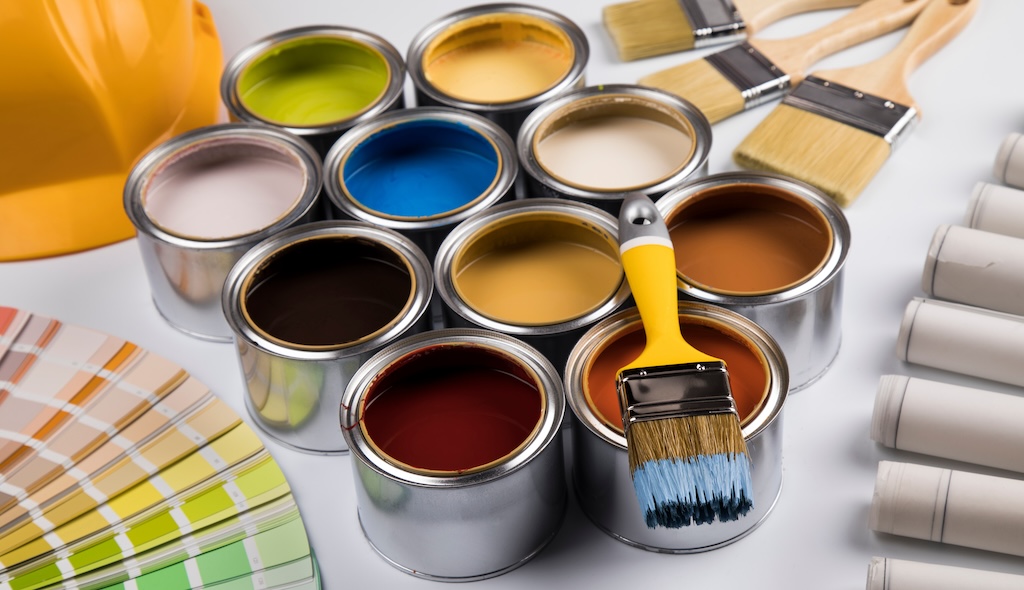After completing a painting project, you often find yourself with leftover paint. Storing this paint properly is crucial for preserving its quality and ensuring it can be used for touch-ups or future projects. Improper storage can lead to paint spoilage, rendering it unusable. This blog discusses proper storage techniques for unused house paint, helping you maximize its shelf life and reduce waste.
Choosing the Right Environment
Temperature Control
The key to preserving unused paint is storing it in a temperature-controlled environment. Extreme temperatures can ruin paint; freezing temperatures can cause the paint to separate and become unusable, while excessive heat can dry it out. Ideally, store your paint in a cool, dry place where the temperature is consistent, such as an interior closet or a climate-controlled garage.
Avoiding Damp Areas
Moisture can be detrimental to stored paint. Avoid storing paint in damp areas as moisture can seep into the cans, leading to mold and mildew growth in the paint. Basements and outdoor sheds, unless well-insulated and dry, are often not ideal for paint storage. Instead, opt for a cool, dry place within your home, such as a utility closet or an interior storage area, to ensure the longevity and quality of the paint over time.
Preparing the Paint for Storage
Sealing the Can Properly
Ensure the paint can is sealed tightly to prevent air from getting in, which can cause the paint to dry out or form a skin on the surface. Before sealing, wipe off any excess paint from the rim and the lid. You can place a layer of plastic wrap over the paint can opening before replacing and sealing the lid to provide an extra air-tight seal.
Labeling
Label each paint can with the date, the room or project it was used for, and the color code or name. This will make it easier to find the right paint for future touch-ups or projects. Additionally, consider keeping a paint diary or a digital record that includes photos of the projects, the paint cans, and their details, further simplifying the task of matching colors and finishes for any subsequent work.
Handling Leftover Paint
Transferring to Smaller Containers
If there’s only a small amount of paint left, consider transferring it to a smaller container. This minimizes the amount of air in the container, helping preserve the paint quality. Make sure the new container is clean, dry, and has a tight-fitting lid. Labeling the new container with the paint color, type, and date of transfer is also a good practice, making it easier for you to identify and use the paint for future touch-ups or small projects.
Stirring Before Use
When you’re ready to use stored paint again, stir it thoroughly. Over time, the ingredients in paint can separate. If the paint is too thick, thin it with a little bit of water (for latex paint) or mineral spirits (for oil-based paint), but only as a last resort as it can affect the color and texture. Always test the thinned paint on a small, inconspicuous area first to ensure it provides the desired coverage and finish, avoiding any surprises during the larger application.
Disposing of Old Paint
Checking for Usability
Before using stored paint, check it for signs of spoilage. Bad paint may have a foul odor, lumps, or a skin that can’t be stirred back in. If the paint is unusable, dispose of it properly according to local regulations. Additionally, investing in fresh paint when necessary can significantly enhance the quality and longevity of your painting project, ensuring a professional finish and lasting durability.
Donating Unused Paint
If you have paint that you won’t use but is still in good condition, consider donating it to local schools, theaters, community centers, or organizations that accept paint donations. Doing so not only helps you declutter responsibly but also supports community projects and initiatives in need of resources. This act of donation can foster a sense of community and sustainability, promoting the reuse of materials and reducing waste.
Final Thoughts
Proper storage of unused house paint is essential for extending its lifespan and maintaining its quality. By controlling the storage temperature, ensuring airtight sealing, labeling, and handling leftovers appropriately, you can keep your paint in good condition for future use. Always check the paint before reuse and dispose of or donate unusable paint responsibly. For more tips on paint storage and home maintenance, visit our website at sisupainting.com and explore our blog at sisupainting.com/blog.





No comment